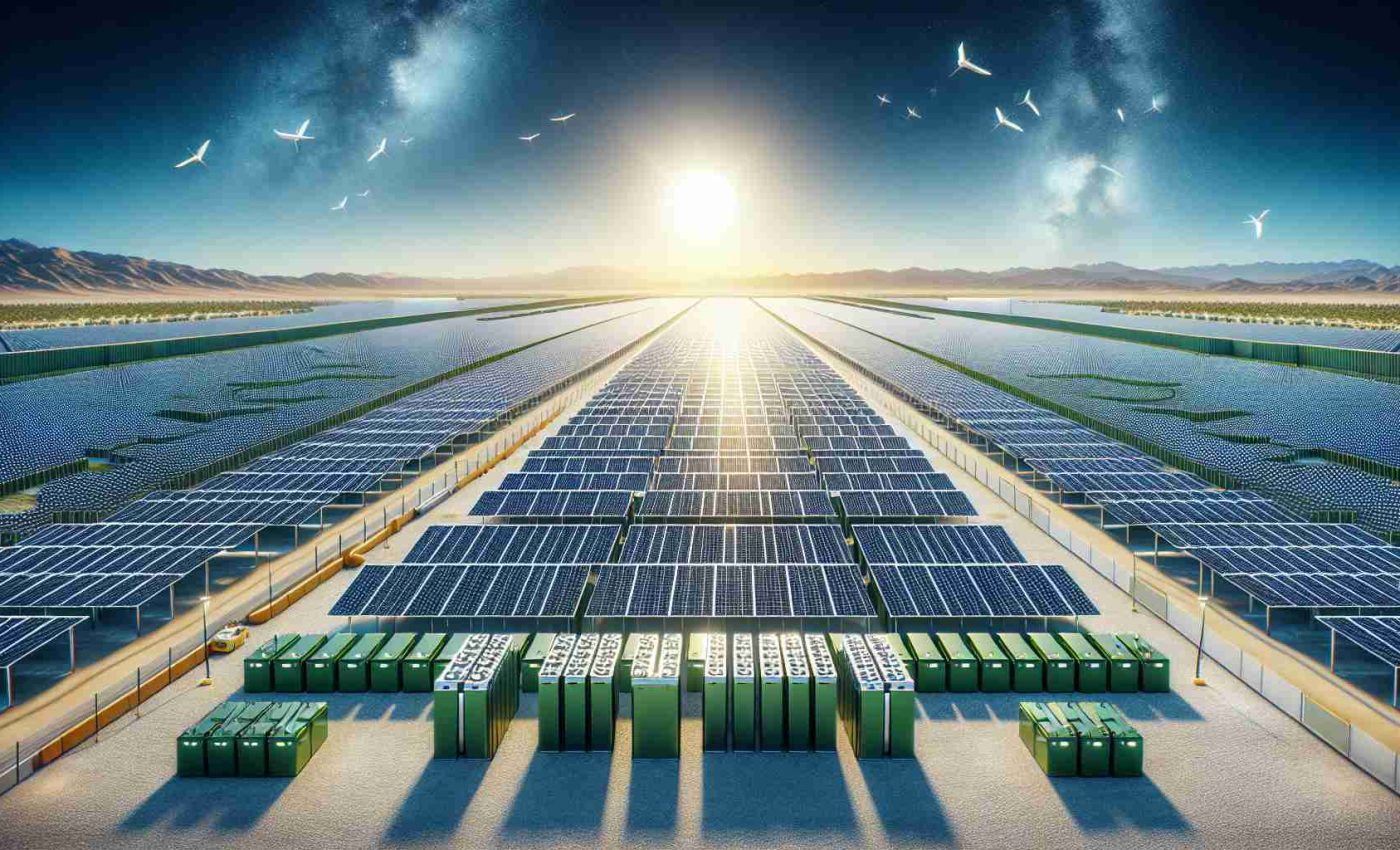- Masdar is constructing the largest solar-plus-battery plant, set to start operations in 2027.
- The facility will generate 24/7 baseload power, dispelling myths about solar and wind reliability.
- Located in the Middle East, it will have a capacity of 5.2 GW and 19 GWh of battery storage.
- Expected annual reduction of 5.7 million tons of CO2, equivalent to planting 100 million trees.
- The UAE aims for 50% of electricity from clean sources by 2050, with Masdar leading innovation.
- Masdar plans to expand its renewable portfolio to 100 GW by 2030, showcasing the potential of oil-rich nations in the transition to sustainability.
In a bold move to reshape the renewable energy landscape, Masdar is set to construct the largest solar-plus-battery plant on the planet, challenging critics who label solar and wind as unreliable and too costly. When it kicks into gear in 2027, this colossal facility will dominate the scene, generating 24/7 baseload power efficiently and competitively.
This ambitious project, nestled in the sun-drenched Middle East, spans an impressive 5.2 gigawatts of solar photovoltaic capacity and boasts 19 gigawatt-hours of battery storage. The expected outcome? A staggering reduction of 5.7 million tons of carbon dioxide yearly—like planting an astonishing 100 million trees!
As the UAE strives to produce half its electricity from clean sources by 2050, Masdar stands at the forefront with a commitment to decarbonization and innovation. While battery technology is becoming more affordable, challenges remain for developing nations. However, the demand for reliable, around-the-clock energy is surging, especially with predictions that AI-driven energy growth could skyrocket by 250% by 2050.
Masdar’s proven track record includes significant undertakings like the Al Dhafra plant and multiple solar projects across the globe. With plans to expand its renewable energy portfolio to 100 gigawatts by 2030, the company is showing that with vision and investment, even oil-rich nations can transition to sustainable energy sources.
The takeaway? If the UAE can pivot from oil to renewables, so can the world! Masdar exemplifies how strategic investments in green energy can yield financial and environmental benefits, paving the way for a cleaner, thriving future.
Massive Solar Initiative: Transforming the Future of Renewable Energy
Overview of Masdar’s Solar-Plus-Battery Plant
Masdar is embarking on an ambitious project to build the largest solar-plus-battery plant in the world, expected to be operational by 2027. This ground-breaking facility will not only help in generating 24/7 baseload power but will also significantly reduce carbon emissions—projected to cut down approximately 5.7 million tons of CO2 annually, comparable to planting around 100 million trees.
Key Features of the Project
– Capacity: The facility will feature 5.2 gigawatts of solar photovoltaic capacity paired with 19 gigawatt-hours of battery storage.
– Location: Positioned in the sun-rich Middle East, it takes advantage of ideal solar conditions.
– Environmental Impact: The project aligns with the UAE’s goal of sourcing half of its electricity from renewable energy by 2050.
Pricing and Investment Insights
As technology advances, the cost of solar and battery storage is expected to decrease, making such projects more financially feasible. Masdar is committed to expanding its renewable energy portfolio significantly, targeting a 100-gigawatt capacity by 2030.
Trends and Innovations in Renewable Energy
1. AI-Driven Energy Growth: Forecasts suggest that AI could boost energy growth by 250% by 2050, facilitating smarter energy management systems.
2. Global Renewable Goals: Many nations are following the UAE’s investment strategies by prioritizing renewable over fossil fuels, marking a notable shift in global energy policies.
Pros and Cons of the Project
– Pros:
– Significant reduction in carbon emissions.
– Creation of reliable, sustainable energy sources.
– Potential for economic growth through green job creation.
– Cons:
– Initial capital investment can be high.
– Challenges in adoption may persist for developing countries.
Important Questions
1. What type of technology will be used in the solar-plus-battery plant?
– The plant will utilize advanced photovoltaic solar technology combined with high-capacity lithium-ion batteries to ensure 24/7 power availability.
2. How does battery storage enhance the reliability of solar energy?
– Battery storage systems enable the capture and storage of solar energy produced during peak sunlight hours, allowing it to be utilized during nighttime or cloudy days, thus providing consistent power supply.
3. What are the implications for global energy markets?
– As Masdar leads the way in renewable investments, there may be a ripple effect prompting other nations and companies to focus on sustainability, potentially altering energy pricing and availability on a global scale.
For more insights into sustainable energy initiatives, visit Masdar.






